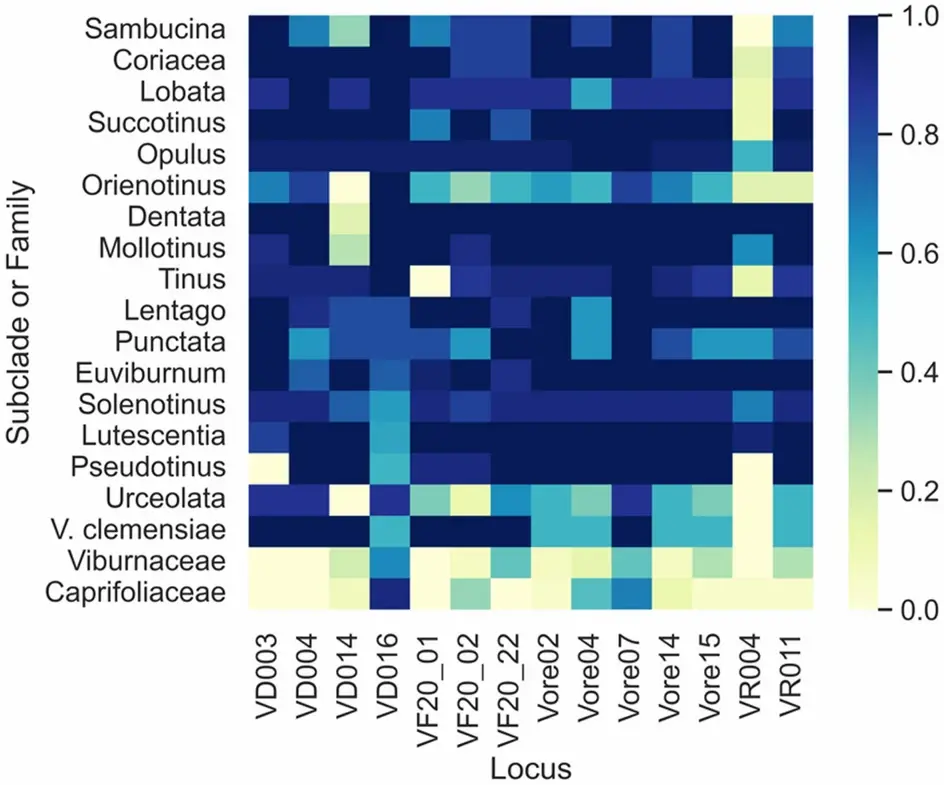The beautiful Viburnums
1st paper out in 2023
Trinity (yes, the same superstar PhD student from EPP) saw through to publication of the second leg of her MS research. From about 160 species of Viburnum, we gathered a collection of 46 species (224 samples) and 5 more species of other Viburnceae and Caprifoliaceae. These samples were generously shared with us by various U.S. herbaria and arboreta - and all happened under COVID, so we remain very grateful to: U.S. National Arboretum Herbarium, The Morton Arboretum, U.S. National Arboretum, Yale Peabody Museum, Herbarium of the Arnold Arboretum, Arnold Arboretum, Spring Grove Cemetery and Arboretum, Mt. Airy Arboretum, JC Raulston Arboretum, Morris Arboretum, University of Tennessee Herbarium, Carnegie Museum of Natural History Herbarium, University of Washington Botanical Garden, and A.C. Moore Herbarium.
Based on her previous work on SSRs in V. farreri and SSRs studies by others on 3 major clades of Viburnum species, Trinity checked how well a set of 49 molecular markers cross-amplify. In other words, which markers can be used more broadly even in less-related species. This is because analyzing that across all 160 species was next to impossible due to limitations in samples and technical feasibility.
A subset of 14 potentially comprehensive markers for Viburnum species was identified and evaluated for the ability to detect polymorphisms in species outside of their respective clades. Trinity then validated that set on expanded collections of 4 species, each from different subclade of Viburnum. Despite these comprehensive SSR markers displaying wide cross-amplification, they still also have relatively high observed heterozygosity rates and thus, are useful for genetic diversity studies of any specific species.
To the best of our knowledge, this makes this comprehensive marker set the first marker set capable of characterizing any species in a large genus. This will save time and resources in future research as no additional markers will need to be developed. Future applications for these markers could include characterization and population-level studies for any species within or closely related to Viburnum as well as adding them to established linkage maps for future breeding efforts.
